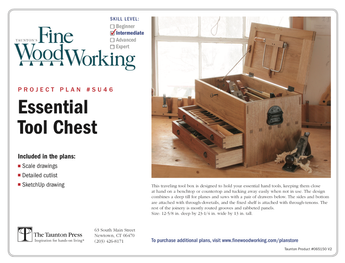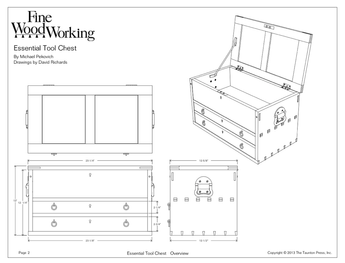I have always and only used japanese waterstones since I started my woodworking hobby, few years ago. At first I had read positive opinions about them and I started to use them exclusively. So, I cannot compare with any other sharpening stone, like diamond, ceramic and so on. I know they are appreciated for the fast cutting action, but to me they have big disadvantages too. the biggest one is that they wear quickly, and I always have to true them with a flattening stone. Eventually the flattening stone will have to be trued itself. So, few days ago I was dreaming about the big advantage of diamond and ceramic stones that remain flat forever. Another disadvantage about waterstones is that I cannot use them to sharpen my scrapers because they groove easily. So my question is about other stones disadvantages compared to waterstones. They have to be slow cutting or what? Otherwise how is it possible that they are this overwhelmed by waterstones? Why are waterstones so appreciated, despite the annoyance of their wearing properties? Why not using ceramic or diamond stones exclusively? Thanks Enrico
Discussion Forum
Get It All!
UNLIMITED Membership is like taking a master class in woodworking for less than $10 a month.
Start Your Free TrialCategories
Discussion Forum
Digital Plans Library
Member exclusive! – Plans for everyone – from beginners to experts – right at your fingertips.
Highlights
-
Shape Your Skills
when you sign up for our emails
This site is protected by reCAPTCHA and the Google Privacy Policy and Terms of Service apply. -
 Shop Talk Live Podcast
Shop Talk Live Podcast -
 Our favorite articles and videos
Our favorite articles and videos -
E-Learning Courses from Fine Woodworking
-
-
 Fine Woodworking New England Event
Fine Woodworking New England Event -












Replies
it depends
Each system has advantages and disadvantages, IMHO, Enrico. Which to use depends on what you are sharpening, how much you want to spend (both money and time), and how religious you are about any particular sharpening concept. Personally, I use a mix of oil stones, natural Japanese water stones, Norton water stones, and diamond. I haven't gone down the ceramic route . . . yet.
Thanks Ralph, but considering that diamond stones do not need to be flattened over time, if you had to say an advantage of waterstones over diamond stones, which one would it be?
Wouldn't any surface go hollow with use, over time? Water stones cut very fast, takes about 5 sec with diamond plate to flatten after each use, and diamond plate should stay flat enough for the life of the water stone.
One advantage of Water stones is they are available
I began with oil stones as a kid. A serious kid that loved tools but a kid. I had bad oil stones and had a bad experience with using them. I still have them and still feel the same way.
I have most of the other types as well. The ceramics are going to go out of flat and need to be dressed. The diamond are great for hogging off metal before the finer water, or oil stones. Also the diamond stones are just the ticket if you are going to be working in an extreme environment where water stones may freeze and crack. Say . . . building a cabin in Alaska with hand tools; like the guy on PBS. The retired diesel mechanic that went to live by his wits alone and build a life there with his few hand tools and a rifle. Very impressive documentary. I always enjoy the hell out of watching it. But I got of the subject
The diamond stones don't tend to go very fine 1200 or so where as the water stones go to a mirror producing polish on the blades with 8000 or 15000. The finest oil stones are around 4000. Not bad though.
Now to the reason for my title on this post :
I got all excited and decided to save up and buy me a translucent, high end oil stone. Just about the time I was going to place the order the good ones disappeared from the market as far as I can tell. For example :
http://www.nortonstonesstore.com/Store/index.php?_a=viewProd&productId=78
Looks like they have if I wait three weeks or more. Last I checked they were not available. Other sites were out of stock. I had my heart set on the same size stone as my others 8" x 3"
Here is the loo loo but I am not $180 excited to get an oil stone :
http://www.amazon.com/gp/product/B003J3V0ZY/ref=ox_sc_sfl_title_10?ie=UTF8&m=A1TVQ62HYC7B7Y
I ENJOY my sharpening so flattening the water stones is not a burden and I don't need to do it every time I do a sharpening session so it is just no big deal.
Kind of the wooden sail boat thing. Is it worth all that varnishing and maintenance ? Some say yes, some say not. I say water stones are a lot less work than owning a sail boat.
so-called "Hard Arkansas"
I wonder if real hard Arkansas is still available. I have several old ones that are too narrow to do any good for plane irons. The new, wider ones just aren't the same quality. The old black Arkansas "razor hone" I have is one shade this side of glass. The other old hard Arkansas stones are about three shades this side of glass. The new "translucent" hard Arkansas stone I bought recently is closer to 1000 or 2000 grit - just not the same.
waterstones vs. diamond
The advantage of waterstones over diamond? Master Po will not teach you how to sharpen with diamonds. ;-)
Catch 22
Ralph,
Arkansas stones may be better but they are difficult for the common man to come by.
Thanks for your insights.
Hmmmmm . . . I wonder if there is some other country on this marvelous planet where a hard stone such as your old ones might be found. Surely there is. Another thought just struck this bird brain of mine; maybe synthetic stone manufactures have even made stones of the same characteristics of the old hard Arks and found them to not cut as well as the current Shaptons and Nortons.
And finally the cynical (let's substitute "cautious" for our gentler readers ) side of me, that I have come to trust for its nearly un failing ability to knock my chestnuts out of the fire of exuberant enthusiasm, is whispering to me that softer stones are more profitable than fast cutting hard ones.
So many questions.
I'm sure, to a person, the long time readers of my scribblings would agree that if I had to make a living from my wood working I would surely starve to death due to the time I take preparing my blades. I don't, and so I won't and my results are infinitely gratifying. As I said I am easily entertained.
Viewed in the piercing bright light of a high altitude Colorado day that puts me right where I want to be; a keen amateur of our glorious craft.
Sorry . . . I spent the last hour reading high brow reviews of the new book on Bobby Fischer trying to decide whether or not to buy the damned book.
http://www.amazon.com/gp/product/B003EI2EI6/ref=kin_ipa_8?ie=UTF8&a=B003EI2EI6
Since I did not have a single thing to contribute there that was even remotely viable I had to get all wordy here.
My search for a good read has come to a precipice and the free Kindle sample of that book really hooked me but there are some good arguments to dismiss it as a biography that comes up lacking facts and is full of invention.
Any one read that book? Rat hole any one?
Functional Flatness
... probably more understood and appreciated by professional woodworkers. They also know how to sustain it, needing only infrequent flattenings.
Use the whole surface. The same abrading action that dishes the stones can be used to keep the stones functionally flat much longer.
I do admit that it is easier to keep checking for flatness than to do quality sharpening or woodworking.
Best wishes,
Metod
Let me just specify...
I would like to point out that my working space is just... ridiculous. Every time I need to sharpen I have to assemble everything. Flattening the stones is just another trouble. Also, there is the unanswered question of scarper sharpening. Do you ever use watersones to sharpen scrapers?
Yes, I hone my scrapers on my water stones. Careful to keep scraper perpendicular while moving it laterally and back and forth. Doesn't need much time on stone if I use pretty fine file to dress the scraper.
Working Space
I always set up to sharpen. I sharpen in the kitchen where a good supply of running water and year round warmth makes it a snap. I get around this set up and tear down time "penalty" ( about five minutes ) by sharpening a stack of the same size blades and then just trade them out while in the shop as they dull.
I put the sharpening supplies in the pantry and under a storage cabinet. Takes serious détente with the head chef. DO NOT ATTEMPT THIS WITHOUT A PRE-NEGOTIATED TREATY.
>Ridiculous work space.<
Keep in mind some of the old time wood workers worked in the main room of the house. The "living room" ?
Many Japanese wood workers, even to day, work outside or in the kitchen due to lack of real-estate. I hope this is starting to make your work area a little more attractive.
My Dollar
For my money, the new Arkansas stones are far superior to the Arkansas hard stones of forty years ago.
Some alternatives
Hi ESC
Two alternatives come to mind.
The first are the ceramic waterstones, such as Shapton. These stay flat a lot longer than, for example, King or Norton. and they do not require to be soaked - just a little spritz of water before use. I've used the Pro Shaptons for a few years now (1000/5000/12000). They cut quickly and stay flat longest. They do benefit from a coarse diamond stone to keep them flat, and this takes a few seconds to do.
The other alternative is diamond paste. Diamond paste is cheap. A little goes a long way. The issue with diamond paste is finding a decent substratum. Caste iron is best. I came up with an idea here to make cast iron plates for 40/10/0.5 micron paste ...
http://www.inthewoodshop.com/WoodworkTechniques/Castironhoningplatesfordiamondpaste.html
Regards from Perth
Derek
Cast Iron
When you put diamond paste between two surfaces, you're lapping the softest surfaces.
Cast iron is only a good idea if it's harder than all your chisels. Otherwise, you're lapping the plate, not the chisel.
When you put diamond paste between two surfaces, you're lapping the softest surfaces.
Cast iron is only a good idea if it's harder than all your chisels. Otherwise, you're lapping the plate, not the chisel.
Where do you get this from?
It's actually the other way around. The diamonds bed into the softer stratum and it is the diamonds that cut anythung that glides over their surface, preventing the steel from touching the iron/substratum.
Regards from Perth
Derek
Thank You Derek !
You are a treasure ! Especially at this time of . . .
I don't even have words for it but what ever is happening here on Knots. Or not happening more like.
Fascinating blog on your brilliant source for lapping plates.
Would be interesting to really measure the volumes of material removed from both surfaces after lapping. Perhaps some super sensitive scales.
I can see both sides of the argument. Lapping plates as far as I have found in my studies have been cast iron. Perhaps from necessity for economical manufacture. I have a bunch of old machinist mags and that is what they use.
Diamond faceting also just came to mind. A softer disc turning like a phonograph table with diamond paste on it and the diamond is lowered on to this to make a facet. A softer surface lapping a harder one. I don't know anything about it really but I saw it done a time or two.
Thanks again.
I have one or two subjects of interest I could post that I been saving up but I am not sure there are many left here to read it.
A couple of years ago there were discussions here on the highest levels of wood craft and finishing. Are all those people working in their shop and nobody else is getting into it ? For the person wanting to acquire the skills for truly fine woodworking , hand cut narrow dovetailing, mortise and tenon, Swedish NK drawer guides, shop cut veneer, the carving that goes with the high boys and the chairs of that time was ALL happening here.
During the last couple of decades the tools were/are available, there were books and classes and people here doing it, ready to set one on the right paths.
I am just beginning to realize just how fortunate I was to take it up during the last decade ! ! ! ! ! Krenov and Malloof were alive . . . what an auspicious time for the amateur woodworker.
Well I got all off topic there but just wanted you to know there are those here who appreciate you holding up your end of the plank as Krenov used to say.
Wow photos and all.
I started out with Japanese waterstones but didn't like the mess and constant flattening. Got good edges, though.
Then I tried the Scary Sharp sandpaper method. Not so messy and you can get sharp edges with it but there was a tendency to round the edge slightly.
Now I have a full set of Diamond stones. I thought I'd give them a try seeing as how they require less water, and no flattening. I get armhair shaving edges that seem to cut well. But, as the manufacturer states, there are a few scratches on the surface which, they say, will disappear as the stones get worked in.
So far I like this system.
sharpening
I am may wrong as I have more time to research than money to spend on stones, but IIRC the speed of cut is inversly proportionate to the toughness of the substrate material. In essence, your waterstones achieve that morror, scary-sharp, hone BECAUSE they wear so quickly. It's a trade-off that a lot of people seem willing to accept. As previously mentioned, the diamond plates cut fast AND stay flat, but don't get fine enough to get to that level of sharp that scares the wood into flattening itself. As for ceramic, I don't know much about them, so won't comment too much. Still, while a ceramic substrate would be tougher and wear less, it seems like the initial rule would apply. If the substrate isnt allowed to wear away, there will be a dramatic decrease in the speed and ease of cut as the abrasive (idk if it's silicone carbide, aluminum oxide, or something completely different) is worn away. That wear is what keeps an ample and fresh supply of abrasive on the surface of the stone. Like I said before, I could be off base, as I am not very familiar with ceramic stones.
This forum post is now archived. Commenting has been disabled